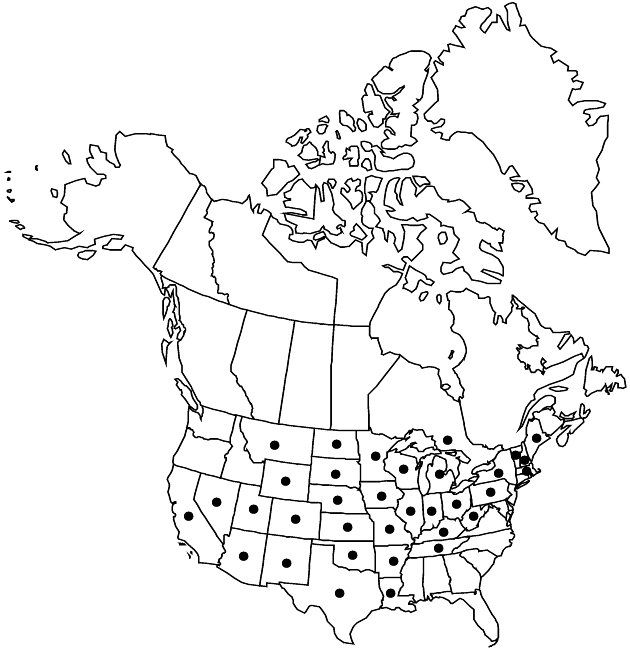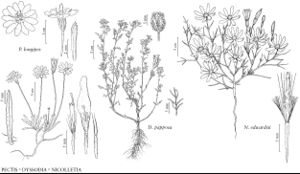Dyssodia papposa
Trans. Acad. Sci. St. Louis 5: 503. 1891.
Leaves 15–50 × 10–40 mm overall, ultimate lobes (7–) 11–15, 5–20 × 1–3 mm, glabrous or sparsely hairy, dotted with oil-glands. Peduncles 1–5 (–10) mm. Involucres 6–10 mm. Phyllaries each bearing 1–7 oil-glands. Ray laminae 1.5–2.5 × 1–2 mm. Disc corollas ca. 3 mm. Cypselae3–3.5 mm; pappi 1–3 mm. 2n = 26.
Phenology: Flowering summer–fall.
Habitat: Grasslands, open woodlands, often ruderal, fields, along roadways
Elevation: 0–2000 m
Distribution

Ont., Ariz., Ark., Calif., Colo., Ill., Ind., Iowa, Kans., Ky., La., Maine, Mass., Mich., Minn., Mo., Mont., Nebr., Nev., N.H., N.Mex., N.Y., N.Dak., Ohio, Okla., Pa., S.Dak., Tenn., Tex., Utah, Vt., W.Va., Wis., Wyo., Mexico, Central America, in South America
Discussion
Records of Dyssodia papposa from Ontario and from California, Maine, Massachusetts, New Hampshire, New York, and Vermont evidently document local, probably ephemeral, introductions. In 1837, C. W. Short noted of D. papposa on a specimen label, “This plant is so abundant, and exhales an odor so unpleasant as to sicken the traveler over the western prairies of Illinois, in autumn.”
Selected References
None.
